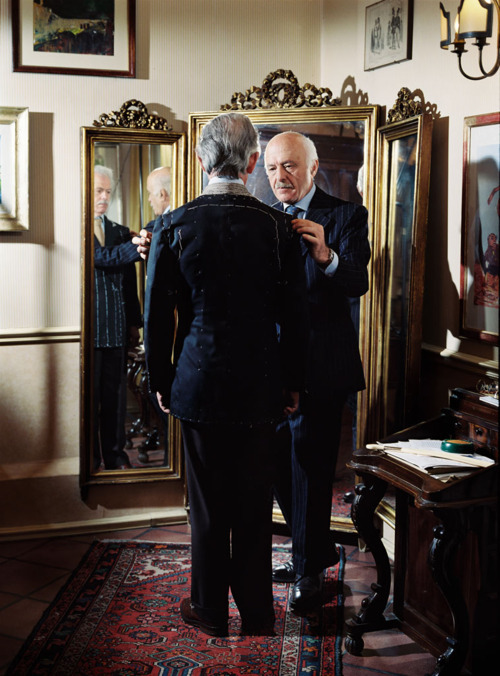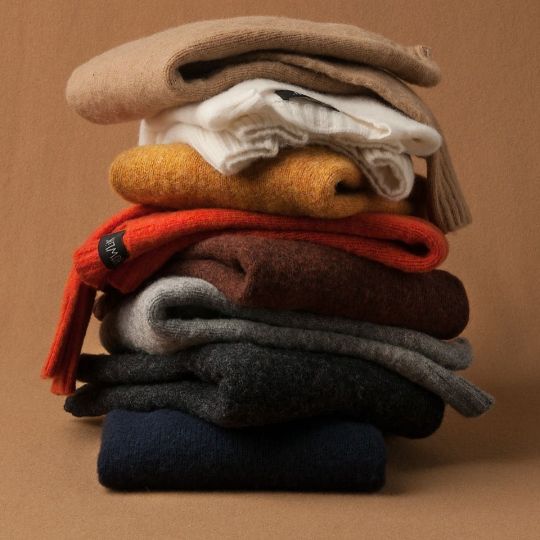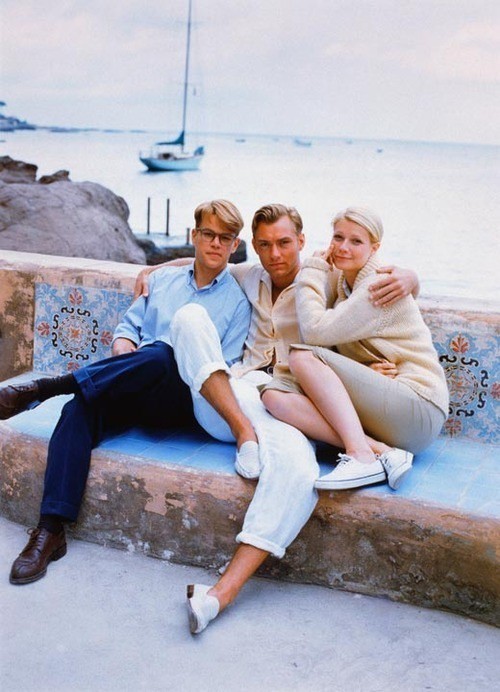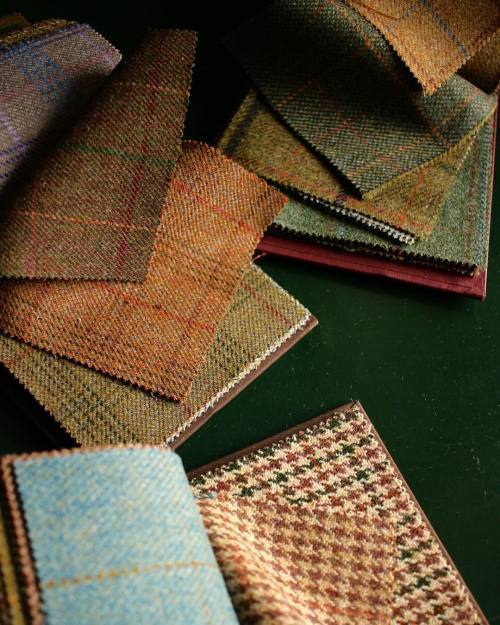
Bruce Boyer, one of my favorite writers on men’s style, has a great intro to one of his chapters in Eminently Suitable. The opening reads:
“Some men just happen to look good in clothes,” we say, in that resigned way we have of talking when we think we’re rather stuck with what we’ve got. You hear it all the time, the idea that some men simply look better because their bodies “wear” clothes better. It’s the kind of non-explanation we give when we feel we’re dealing with some unfathomably mystery, like why paper is always strongest at the perforation. That sort of thing. It’s the reason fellows give for shunning hats or double-breasted jackets, or plaid suits. Even some men who work at keeping in shape, who exercise and watch their diet, have this fatalistic attitude.
As Bruce notes in his book, dressing well is a skill like anything else. And while we have guides on how you can put together a starting wardrobe — from figuring out what you need to our suggestions for “wardrobe essentials” — the actual act of dressing well is about more than having the right things. It’s about knowing how to wear those things in stylish way.
We can’t possibly cover all that in one post — that’s essentially what this entire site is about — but we wanted to write a crash course on the subject. Once you have the clothes you want in your wardrobe, how do you put together a successful outfit? Much of this is about knowing how to wear clothes that fit well, figuring out how to coordinate colors and patterns, and learning to communicate a message through your clothing choices. Here’s a run through of some basic guidelines, along with links to related posts at the end of each subsection for you to explore further.

FIT COMES BEFORE EVERYTHING
We’ve talked about fit elsewhere, but it bears repeating. Even the most basic shirt-and-trousers combo can look great if your clothes fit well. Training your eye for how clothes should fit, however, takes a while — and a bit of honesty about your body.
The best way to get perfectly fitting clothes is to have everything made for you by a top-end tailor. But unless you’re made of money, that’s prohibitively expensive (and cheaper tailors won’t be able to do this for you). So you’ll have to do some of this yourself. Think more like a tailor when shopping off-the-rack, then take things to an alterations tailor to have items adjusted. Focus on getting clothes that fit and fall cleanly, while still maintaining a flattering shape (what some call a silhouette).
That means clothes that don’t pull, pucker, buckle, or bag anywhere. If you see lines pulling across your chest, something is off. If you see fabric pooling around your ankles, your pants are too long. If you shoulder seam is dropping off your shoulder, the garment is likely too big.
At the same time, clothes have to be designed for movement. Your sleeves should be long enough such that the cuff doesn’t ride up on your arm when you put your hands in front of you. There should be enough fullness in the midsection so that the placket doesn’t pull when you sit down. Jackets shouldn’t be so small that they feel tight when you fasten them.
A few years ago, we shot a video of Jesse visiting his tailor in New York City, Carl Goldberg of CEGO Custom Shirtmakers. Jesse arrived to the shop in his Land’s End shirt, then switched to something Carl made for him. The “before and after” shot between those two is a good way to show what we mean by “clothes ought to fit cleanly.” Jesse’s Land’s End shirt fit him nicely, but his CEGO shirt was better. Aim for that sort of clean, flattering fit when getting dressed.
Note, this doesn’t mean always slimming down. For guys who are just starting to pay attention to how they dress, especially those who favor more classic styles, the most common mistake is wearing things that are too small. Shrunken clothes are bad and going a size up can make for a better look. The goal is to flatter the shape of your body, not recreate it.
Related posts: Our Webisode on Dressing for Your Body Type, How Long Should a Suit Jacket Be, How High Should Trousers Be, Sit Down in Your Shirt When Trying It On, How Much Can Clothes be Altered, How Much Should Alterations Cost, How to Find a Good Alterations Tailor, A Practical Checklist on Fit for When You’re Shopping, A Japanese Guide on How Suits Should Fit, What is a Buttoning Point?, What is a Collar Gap?, How Long Should Trousers Be?, and In-Depth Guides for Shirts, Pants (More on Pants), and Suit Jackets

HAVE A MESSAGE
Fit is just the baseline of a good outfit, and hopefully your closet is already full of properly fitting clothes. The next step is learning how to put things together.
For guys who are just starting out, the biggest mistake is to think of dressing like one would think of painting — a creative expression that involves combining random shapes and colors in a pleasing way. Dressing can be expressive, but it’s more like creative writing than painting. That means having a message, and knowing how to communicate it in a coherent way through your clothing choices.
There are two points to this:
First, dress according to one level of formality. Guys starting out will often throw a formal item into an informal outfit — say, a fedora or suit vest with jeans, or a silk necktie with a trucker jacket. The outfit often ends up looking contrived. And while it’s possible to mix your “highs and lows” — pairing sport coats with denim, for example — successfully doing so takes tremendous attention to detail and familiarity with nuances.
Instead, aim everything towards one specific expression of formality. For tailored clothing, it helps to know how this is often expressed through details. Light colors are less formal than dark ones; patch pockets less formal than welted pockets; rustic linens less formal than worsted wools. Keep things within one level of formality and you’ll end up with a much more successful and sensible outfit.
Second, stay within an aesthetic. It takes a bit of familiarity with fashion aesthetics to do this successfully. You’ll probably need to know a bit about the history of the item or how things are generally combined in certain niches. But the general idea is to not pluck random things from your closet and throw them together in a way you assume looks good. Find a well-defined aesthetic — workwear, Rugged Ivy, contemporary classic, formal business dress, casual tailoring, etc — and work towards that.
When you’re just starting out, however, learning that sort of aesthetic language can be difficult. And given that fashion changes quickly, you may find that certain looks go out of style just as you’ve jumped into them. We’d like to think that the styles we promote here at Put This On are a bit more weatherproof, but still modern and accessible. For guys just starting out, there are some simple niches you can aim towards.


If you like tailored clothing, decide first whether you need to wear formal business suits every day. Those that do will mostly find themselves in dark worsted navy and grey suits, paired with subtly patterned silk ties, white dress shirts, and black oxfords. Don’t be too expressive here, the focus is all in the cut of your clothes and your necktie choices. Their simplicity is what makes these outfits powerful.
On the other hand, if you enjoy wearing tailored clothing but work in a more casual environment, build your wardrobe around sport coats. We have posts on how to find the right sport coat and trouser combinations, how to dress down a tailored jacket, and even a guide on doing business casual. For many people, this will be a world of open neck shirts, brown derby shoes, and gray wool trousers. It’s possible to dress things down further with jeans, but you need the right clothes. Khaki chinos are also a great alternative. Our friend David can be seen sporting the combo above.
For casualwear, there are some simple, easy plug-and-play aesthetics:
- Workwear: Simple, rugged, and affordable. Whether you’re in New York City or New Orleans, anyone can wear a flannel shirt with some jeans nowadays. Best of all, the clothes are easy to maintain and only look better with age. Our friend Brian at Wooden Sleepers, pictured above, gives some good outerwear suggestions in this post — army surplus jackets, chore coats, and denim truckers all play well here. Rugged work boots, plaid flannel shirts, and sturdy gray sweatshirts are also great. We have a post on how to upgrade a workwear look, as well as some places to score affordable pieces.
- Rugged Ivy: Between the heydays of American style in the 1950s and the dressed down era of the ‘90s, there was a look that straddled the line between the formality of sack suits and straight up sportswear. Some called it Rugged Ivy, which is a play on the Ivy look of tweed jackets worn with striped ties. This was things such as five-pocket cords with mountain parkas, Shetland sweaters, and oxford-cloth button-downs. And it’s still a tremendously good look today — classic, but casual, and rugged without being actual workwear. This dovetails pretty closely with what I’ve called the “casual American look,” which is something brands such as Ralph Lauren have built their company around.
- Contemporary Classic: Workwear and Rugged Ivy can be a bit too old school for some readers. If you want to dress classically, but in way that feels contemporary, try slightly more updated takes on classics. This means oxford-cloth button-down shirts with slim-straight jeans or chinos, simple all-white sneakers, and slightly modern versions of classic outerwear (e.g. field jackets and trim topcoats). Even a vintage peacoat can be great for this since the design has changed little over the last hundred years. Our friend Graeme in Sydney does these looks well. For an easy, one-stop shop for this style, try J. Crew.
You don’t need to stay within just these styles, but they’re easy to understand and even easier to pull off. By playing within one niche, and keeping things within one level of formality, you’ll get a better understanding of how to form a message with your clothes. Edit things down and express one idea. This is like supporting a thesis in writing.
Related posts: On Writing and Dressing Well, Country Mouse and City Mouse, Rus in Urbe, Suggested Essentials for a Starting Wardrobe, Doing Business Casual Without Looking Like a Schmuck, Building on Workwear, Doing an Affordable Workwear Look, Rugged Ivy, The Casual American Look, The Simplest Casual Look, Three Ways to Wear a Leather Jacket, and Reading Formality in Tailored Clothing

COMBINING COLORS & PATTERNS
So, you have clothes that fit well and you’ve honed in on a message. How do you actually put together the pieces? Much of this starts with knowing how to coordinate basic colors and patterns.
Coordinating Colors: There are a ton of charts online nowadays on how to coordinate color, but nobody gets dressed in the morning according to a chart. Instead, just stick to three basic principles.
- Contrast Your Pieces: The reason why denim on denim often looks bad is because the individual items don’t contrast enough with each other. Instead, choose things that complement each other, but look distinct. A brown leather jacket does well blue jeans; a navy sports coat with grey wool trousers. The reason is because the colors are distinct, but also complement each other in a way that forms a total and coherent look. Be watchful of things that draw so much attention to themselves.
- Coordinate According to Season and Mood: That means brighter colors for spring/ summer; darker colors for autumn/ winter. A nearly all-black outfit combining black jeans with a black leather jacket and black sweater can also express a darker, more somber mood. The contrast here comes from the different materials, rather than the color.
- Stick to the Basics: Keep it simple. Blue, gray, brown, and white are all great colors to build a wardrobe around — they complement each other in a way that allows you to pull anything from your wardrobe and be assured they go together. Buy dress shirts in white and light blue; dressier trousers in grey; dark jeans in blue; sweaters in navy, gray, and brown. Outerwear is often better in navy or brown, although olive can be useful as well. Shoes are almost always better in dark brown — black and tan can be difficult to wear.
We have a longer, more in-depth guide on how to think about color, but the above will carry you through most situations.
Matching Patterns: There’s a very easy rule-of-thumb when it comes to wearing patterns. Vary them by scale and, if you can, type.
That means combining things that look distinct from one another. So, if you’re wearing a gingham shirt with a mid-scale check, don’t wear it with a tie that has a similarly scaled box check. Otherwise, you’ll create a dizzying moiré effect. Instead, try a thicker striped shirt or a tie with a thin pencil stripe. By varying the scale and type of pattern, the two pieces will look distinct.
Like with colors, you’re often better off with the basics. Stick to simple ties with well-defined patterns in no more than three colors. If your shirt is patterned, keep it to simpler white and light blue combinations. If your jacket is patterned, keep it tasteful and basic. And generally speaking, keep patterns away from the bottom half of your outfit — they draw the eye down, which is the opposite of where you want the focus.
Related posts: How to Think About Color, How to Dress Monochromatically, Better Ways to Wear a White Shirt, How to Wear Tan Shoes Parts One and Two, The Importance of White and Light Blue Shirts, The Importance of Grey Trousers, Sport Coat and Trouser Combinations, How to Wear Trousers in Charcoal and Navy, Solid Navy Ties Go with Anything, The Advantage of Simple Colors, and Mastering Pattern Coordination

LEARN TO KEEP THINGS SIMPLE
When you’re just starting to learn how to dress well, resist the urge to make an outfit “pop.” Often, this happens when a guy realizes his outfit doesn’t look quite right, so he thinks he can improve it by adding some unusual color or accessory — a pair of brightly colored pants or by stacking on some bracelets.
This often ignores why an outfit was unsatisfying in the first place. Nine times out of ten, it’s because the clothes don’t fit well, and they won’t fit any better just because there are a dozen accessories layered over them.
If your clothes fit well, you can dress quite simply. Matt Damon, who played the main character in The Talented Mr. Ripley, demonstrates this in the photo above. The original French version of that film, Purple Noon, also had men in very simple outfits, but still looking great. With a pair of trousers, shoes, socks, and just a basic shirt – so long as the fit is impeccable – you will look good. By keeping things simple, you also won’t look too studied.
It can’t be overstated. You’re often better keeping things simple in the beginning, focusing more on the fit of your clothes than unusual combinations. Wear a jacket that makes sense for the weather, then layer in a collared shirt and, if you need, a sweater in a color that contrasts with the rest of your outfit (although, again, in simple colors such as blue, grey, or brown). Stick with basic gray wool trousers, khaki chinos, and blue jeans. Buy good looking shoes in full-grain leather. Dressing well is often not much more than that.
Related posts: The Advantage of Simple Colors, Accessorizing Your Way Out, The Most Basic Ties, and Simple Principles

LEARN TO MAKE AN OUTFIT INTERESTING
With the above said, dressing well is often about straddling the line between the overly basic and utterly outrageous. And this comes from knowing where you can add a bit of visual interest without going overboard. Some simple strategies that can be incorporated into almost any ensemble:
- Smartly Use Textures: Texture can be a more sophisticated way of making a statement than bright colors or loud patterns. In the colder months, flannel, tweed, and ancient madder are natural choices for tailored clothing. Similarly, waxed cotton, ribbed wools, and pebble grained leathers can be great for casualwear. In the warmer months, you can switch these out for open-weave wools, crinkly linen, and an occasional bit of suede (good for jackets and shoes).
- Wear No More than Two Patterns: Having no patterns can leave an outfit looking a bit flat and boring; having too many runs the risk of things clashing. By sticking to just one or two patterns, you can add just enough visual interest without worrying that you look like you’ve walked out of the 1970s. For a tailored look, this can be as simple as wearing a checked tweed jacket with a solid colored shirt and striped tie (or switching the stripes to the shirt and keeping the tie solid). For casualwear, it can be something like adding a patterned scarf, maybe in a tartan or chunky stripe.
- Go for Low Contrast Ensembles: The key to tonal outfits is to get your contrast from something other than color (e.g. texture, pattern, or sheen). Wool, linen, and cotton all reflect light in different ways, which means even if they’re similar in color, there can be a lot of variation and visual depth. If you feel uncomfortable with going full monochrome, try varying just one thing. Again, black leather jackets go great with black jeans, t-shirts, and boots. But if that feels off to you, try swapping out the top for gray or the black boots for white sneakers.
- Accessorizing Well: The goal here isn’t to be outrageous, but to find something that expresses a bit of personality (what Jesse calls having a “point of distinction”). I personally find oversized scarves to be one of the easiest accessories to throw on — they’re functional in the winter and look great. A bit of tasteful jewelry in the summer can also do wonders for a basic shirt and trouser outfit. I wear a Native American cuff bracelet from Self Edge, sterling silver ring from Neff Goldsmith, and necklaces from Article 22. As Jesse writes: “It’s easy to pile wild choice on top of wild choice, or conversely to make nothing but down-the-middle clothing decisions. To choose to demonstrate understated mastery and nonetheless show distinction is much more difficult.” See this post for ideas on how to accessorize well.
Related posts: Point of Distinction, Adding Interesting Accessories, Mastering Pattern Coordination, Dressing with Just Two Patterns, and Striking a Balance Between Interesting and Wearable